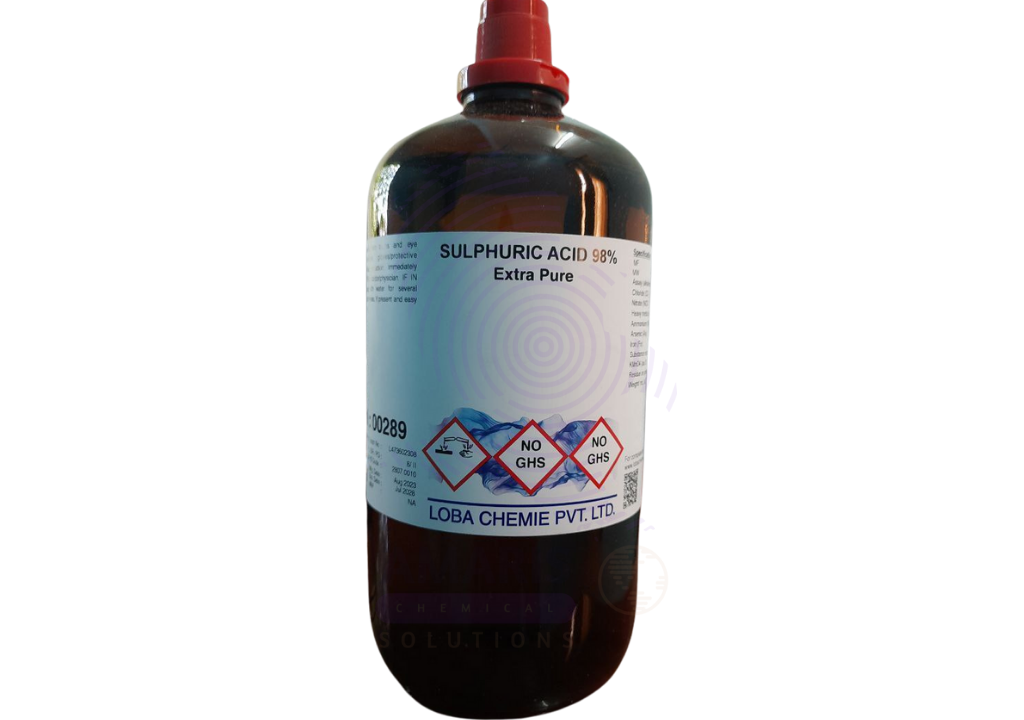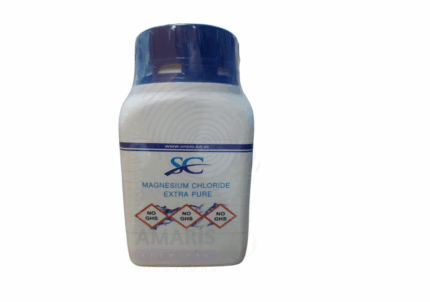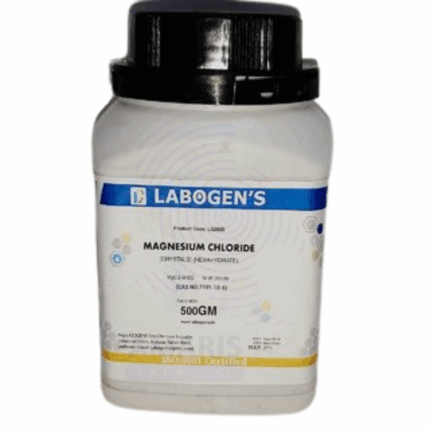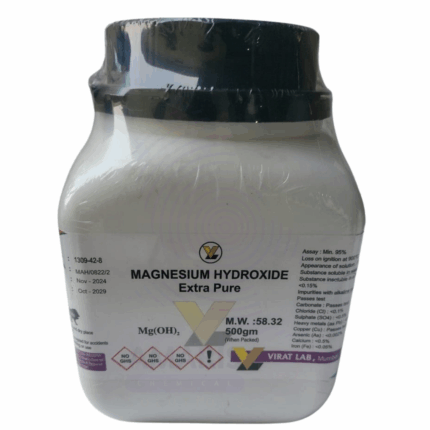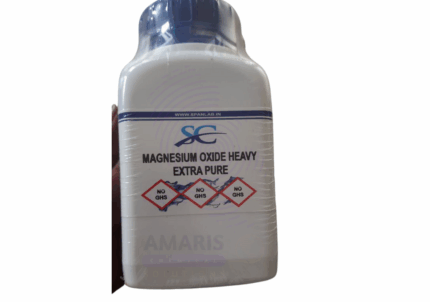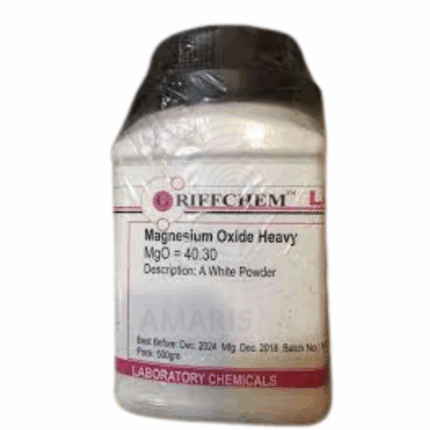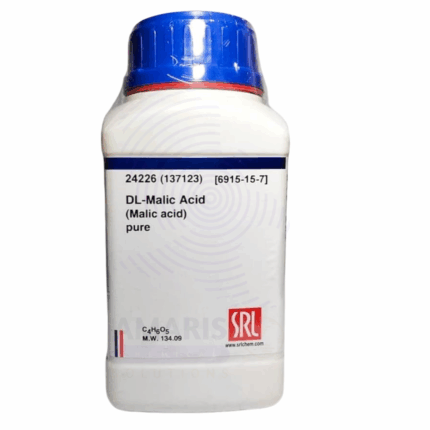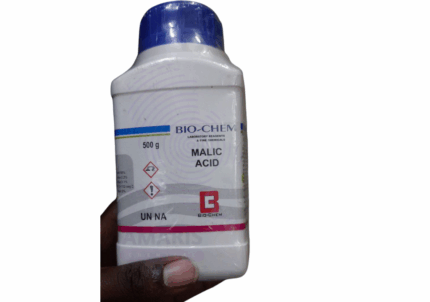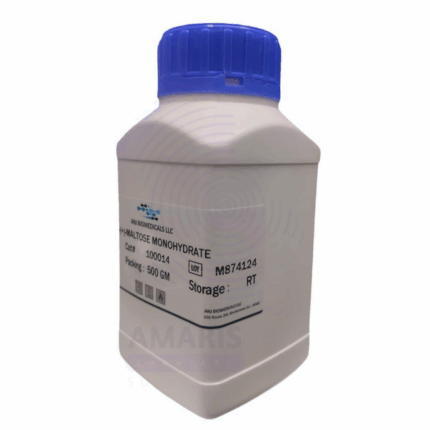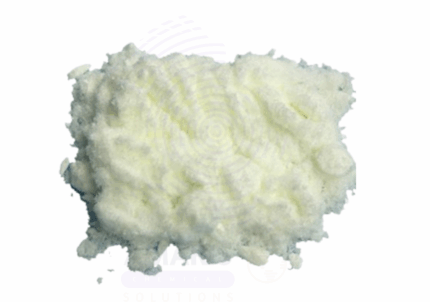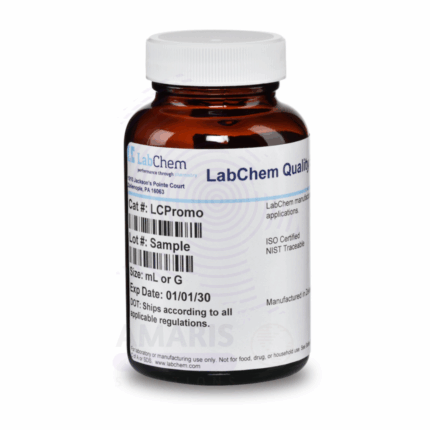

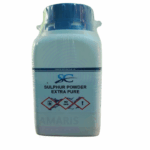
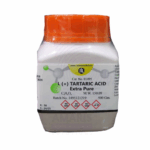
Sulphuric Acid Extra Pure
$ 31.11 Original price was: $ 31.11.$ 30.98Current price is: $ 30.98.
Sulphuric Acid Extra Pure is a highly concentrated, clear, oily liquid and one of the most important industrial chemicals. It is a strong mineral acid widely used in chemical synthesis, analytical laboratories, pharmaceuticals, and industrial processes including fertilizer production, metal processing, and wastewater treatment. Its high purity grade ensures reliable results in laboratory titrations and manufacturing processes. Sulphuric Acid requires careful handling due to its highly corrosive nature and vigorous reactivity with water and organic materials. Proper protective equipment and storage conditions are essential to maintain safety and product integrity.
Sulphuric Acid Extra Pure
PRIMARY USES
- Analytical Reagent & Laboratory Applications:
Used as a strong acid standard for titrations and pH adjustments
• Employed in synthesis and analysis of inorganic and organic compounds
• Essential reagent for acid digestion and preparation of samples - Chemical Industry:
Key raw material in manufacture of fertilizers, dyes, pigments, and explosives
• Used in petroleum refining and metal processing
• Catalyst in various chemical reactions and synthesis - Pharmaceutical & Cosmetic Industry:
Utilized in synthesis of pharmaceutical intermediates
• Used in cosmetic formulation for pH adjustment and processing - Water Treatment Chemicals:
Used for pH adjustment and coagulation in wastewater treatment
SECONDARY USES
- Laboratory Chemicals:
Used in preparation of other reagents and standards
• Employed in cleaning and etching laboratory glassware - Environmental and Green Chemicals:
Used in industrial processes aiming to reduce emissions through scrubbing - Textile Chemicals:
Used for pH control and fiber treatment in textile processing
1. Basic Identification Attributes
- Chemical Name: Sulphuric Acid
• CAS Number: 7664-93-9
• HS Code: 2807.00.00
• Molecular Formula: H₂SO₄
• Synonyms:
- Oil of vitriol
- Hydrogen sulfate
2. Physical & Chemical Properties
- Physical State: Clear, oily liquid
• Color & Odor: Colorless, odorless
• Melting Point: 10.31 °C
• Boiling Point: 337 °C
• Density: 1.84 g/cm³ (concentrated)
• Solubility: Completely miscible with water (highly exothermic)
• pH Level: Strongly acidic (pH < 1 in concentrated form)
• Vapor Pressure: Low at room temperature
• Flash Point: Not flammable
• Stability: Stable under recommended storage conditions
3. Safety & Hazard Attributes
Hazard Class (GHS Classification):
- Corrosive to skin and eyes (Category 1A)
- Causes severe burns and eye damage
• NFPA Ratings: - Health: 3
- Flammability: 0
- Reactivity: 2
• Exposure Limits: - OSHA PEL: 1 mg/m³ (ceiling)
- ACGIH TLV: 0.2 mg/m³ (ceiling)
• Reactivity: - Reacts violently with water and organic materials
- Reacts with metals releasing flammable hydrogen gas
4. Storage & Handling Attributes
Storage Conditions:
- Store in cool, dry, well-ventilated area
- Keep container tightly closed and upright
• Incompatible Materials: - Organic materials, bases, strong oxidizers, metals
• Container Type: - Acid-resistant containers such as glass, certain plastics, or coated steel drums
• Shelf Life: - Stable indefinitely if stored properly
• Special Handling Requirements: - Use acid-resistant gloves, face shield, and protective clothing
- Handle in fume hood or well-ventilated area
5. Regulatory & Compliance Attributes
Regulatory Status:
- Listed as a hazardous chemical by OSHA, EPA, and REACH
- Subject to strict transport and handling regulations
• Transportation Restrictions: - Classified as corrosive material (Class 8) for transport
• Waste Disposal Method: - Neutralize before disposal in accordance with local environmental regulations
6. Environmental & Health Impact
Ecotoxicity:
- Highly toxic to aquatic organisms if released untreated
• Persistence in Environment: - Neutralizes quickly in environment but causes local acidity
• Carcinogenicity/Mutagenicity: - Not classified as carcinogenic or mutagenic
• Biodegradability: - Inorganic acid, not biodegradable but neutralized by natural processes
SAFETY PRECAUTIONS
Personal Protective Equipment (PPE):
• Wear acid-resistant gloves, protective clothing, and face shield
• Use chemical splash goggles or full-face respirator when needed
Handling:
• Avoid inhalation of vapors and contact with skin or eyes
• Handle in fume hood or well-ventilated area
• Wash hands thoroughly after handling
Storage:
• Store away from incompatible substances and ignition sources
• Keep containers tightly sealed and upright
FIRST AID MEASURES
Inhalation:
• Move to fresh air immediately
• Seek medical attention if breathing difficulty occurs
Skin Contact:
• Rinse skin immediately with plenty of water for at least 15 minutes
• Remove contaminated clothing
• Seek medical attention immediately
Eye Contact:
• Rinse eyes with water for at least 15 minutes, keeping eyelids open
• Seek emergency medical care promptly
Ingestion:
• Do not induce vomiting
• Rinse mouth with water
• Seek immediate medical attention
FIRE FIGHTING MEASURES
Flammability:
• Non-flammable liquid
Extinguishing Media:
• Use water spray, foam, dry chemical, or CO₂
• Avoid direct water jet on concentrated acid to prevent splashing
Hazardous Combustion Products:
• May release sulfur oxides and toxic fumes when heated
Firefighter Protection:
• Wear full protective gear and self-contained breathing apparatus (SCBA)


 Preservatives(food)
Preservatives(food) Flavor Enhancers
Flavor Enhancers Acidulants
Acidulants Sweeteners
Sweeteners Antioxidants
Antioxidants Colorants(food)
Colorants(food) Nutraceutical Ingredients (food)
Nutraceutical Ingredients (food) Nutrient Supplements
Nutrient Supplements Emulsifiers
Emulsifiers
 Collectors
Collectors Dust Suppressants
Dust Suppressants Explosives and Blasting Agents
Explosives and Blasting Agents Flocculants and Coagulants
Flocculants and Coagulants Frothers
Frothers Leaching Agents
Leaching Agents pH Modifiers
pH Modifiers Precious Metal Extraction Agents
Precious Metal Extraction Agents
 Antioxidants(plastic)
Antioxidants(plastic) Colorants (Pigments, Dyes)
Colorants (Pigments, Dyes) Fillers and Reinforcements
Fillers and Reinforcements Flame Retardants
Flame Retardants Monomers
Monomers Plasticizers
Plasticizers Polymerization Initiators
Polymerization Initiators Stabilizers (UV, Heat)
Stabilizers (UV, Heat)
 Antifoaming Agents
Antifoaming Agents Chelating Agents
Chelating Agents Coagulants and Flocculants
Coagulants and Flocculants Corrosion Inhibitors
Corrosion Inhibitors Disinfectants and Biocides
Disinfectants and Biocides Oxidizing Agents
Oxidizing Agents pH Adjusters
pH Adjusters Scale Inhibitors( water)
Scale Inhibitors( water)
 Antioxidants(cosmetic)
Antioxidants(cosmetic) Emollients
Emollients Fragrances and Essential Oils
Fragrances and Essential Oils Humectants
Humectants Preservatives
Preservatives Surfactants(cosmetic)
Surfactants(cosmetic) Thickeners
Thickeners UV Filters
UV Filters
 Fertilizers
Fertilizers Soil Conditioners
Soil Conditioners Plant Growth Regulators
Plant Growth Regulators Animal Feed Additives
Animal Feed Additives Biostimulants
Biostimulants Pesticides (Herbicides, Insecticides, Fungicides)
Pesticides (Herbicides, Insecticides, Fungicides)
 Active Pharmaceutical Ingredients (APIs)
Active Pharmaceutical Ingredients (APIs) Excipients
Excipients Solvents(pharmaceutical)
Solvents(pharmaceutical) Antibiotics
Antibiotics Antiseptics and Disinfectants
Antiseptics and Disinfectants Vaccine Adjuvants
Vaccine Adjuvants Nutraceutical Ingredients (pharmaceutical)
Nutraceutical Ingredients (pharmaceutical) Analgesics & Antipyretics
Analgesics & Antipyretics
 Analytical Reagents
Analytical Reagents Solvents(lab)
Solvents(lab) Chromatography Chemicals
Chromatography Chemicals Spectroscopy Reagents
Spectroscopy Reagents microbiology-and-cell-culture-reagents
microbiology-and-cell-culture-reagents Molecular Biology Reagents
Molecular Biology Reagents Biochemical Reagents
Biochemical Reagents Inorganic and Organic Standards
Inorganic and Organic Standards Laboratory Safety Chemicals
Laboratory Safety Chemicals Specialty Laboratory Chemicals(Special Laboratory Equipment)
Specialty Laboratory Chemicals(Special Laboratory Equipment)
 Demulsifiers
Demulsifiers Hydraulic Fracturing Fluids
Hydraulic Fracturing Fluids Scale Inhibitors(oil)
Scale Inhibitors(oil) Surfactants(oil)
Surfactants(oil) Drilling Fluids
Drilling Fluids
 Dyes and Pigments
Dyes and Pigments Bleaching Agents
Bleaching Agents Softening Agents
Softening Agents Finishing Agents
Finishing Agents Antistatic Agents
Antistatic Agents
 Admixtures
Admixtures Waterproofing Agents
Waterproofing Agents Sealants and Adhesives
Sealants and Adhesives Curing Compounds
Curing Compounds Concrete Repair Chemicals
Concrete Repair Chemicals Anti-Corrosion Coatings
Anti-Corrosion Coatings
 Surfactants(cleaning)
Surfactants(cleaning) Builders
Builders Enzymes
Enzymes Solvents (Cleaning)
Solvents (Cleaning) Fragrances
Fragrances
 Electronic Chemicals
Electronic Chemicals Catalysts
Catalysts Lubricants
Lubricants Photographic Chemicals
Photographic Chemicals Refrigerants
Refrigerants Automotive chemicals
Automotive chemicals Pyrotechnic Chemicals
Pyrotechnic Chemicals
 Biodegradable Surfactants
Biodegradable Surfactants Bio-based Solvents
Bio-based Solvents Renewable Polymers
Renewable Polymers Carbon Capture Chemicals
Carbon Capture Chemicals Wastewater Treatment Chemicals
Wastewater Treatment Chemicals
 Pigments
Pigments Solvents(paint)
Solvents(paint) Specialty Coatings
Specialty Coatings Binders/Resins
Binders/Resins Additives
Additives Driers
Driers Anti-Corrosion Agents
Anti-Corrosion Agents Functional Coatings
Functional Coatings Application-Specific Coatings
Application-Specific Coatings
 Fresh Herbs
Fresh Herbs Ground Spices
Ground Spices Whole Spices
Whole Spices Spice Blends
Spice Blends Dried Herbs
Dried Herbs
 Leavening Agents
Leavening Agents Dough Conditioners
Dough Conditioners Flour Treatments
Flour Treatments Fat Replacers
Fat Replacers Decoratives
Decoratives Preservatives(baking)
Preservatives(baking)
 Plasticizers & Softeners
Plasticizers & Softeners Reinforcing Agents
Reinforcing Agents Adhesion Promoters
Adhesion Promoters Vulcanizing Agents
Vulcanizing Agents Antidegradants
Antidegradants Blowing Agents
Blowing Agents Fillers & Extenders
Fillers & Extenders Accelerators & Retarders
Accelerators & Retarders